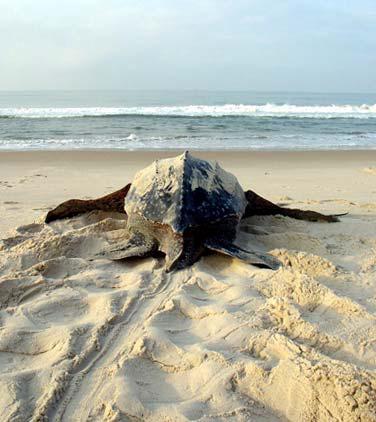Suzanne Livingstone
The main project aims are to protect the turtles and their habitat by means of research and monitoring, initiate education programs, strengthen local and international collaboration, and to raise public awareness on the endangered status of marine turtles.

The Gamba Protected Areas Complex in Gabon is a mosaic of forest, freshwater and coastal habitats situated in the south-western part of Gabon along the Atlantic coast, and extends over a total area of 12,000 km2. This region harbours a huge diversity of plants and animals, including significant populations of western lowland gorillas, central chimpanzees, forest elephants and four species of marine turtle (leatherbacks, greens, hawksbills and olive ridleys). The Complex is considered as one of the best-preserved landscapes of its kind in Central Africa. A turtle monitoring programme was set up in the Gamba complex in 2002, and has become an important component of the Government’s ecological monitoring scheme. The study has documented a decline in numbers of nests over the last three years. Long-term monitoring is of utmost importance to gain insight into the status and ecology of these populations.
Recent research suggests that Gabon hosts one of the largest leatherback nesting populations in the world. Within the Gamba Complex of Protected Areas, a limited amount of data has been collected on the nest ecology of leatherbacks, an important measure of the health of the population. High levels of erosion and predation exist on the beaches. In 2004, an open-air hatchery was created for the translocation of threatened nests. As well as supporting doomed nests, the hatchery proved very successful in attracting visitors and generating funds for the conservation work. However, the hatching success of nests in the hatchery has been much lower than in natural nests. This project is designed to create a baseline of data on the nesting ecology (depth, temperature, hatching success) of natural nests, for comparison with other global populations, and to try to make improvements to the hatchery to increase hatchling output.